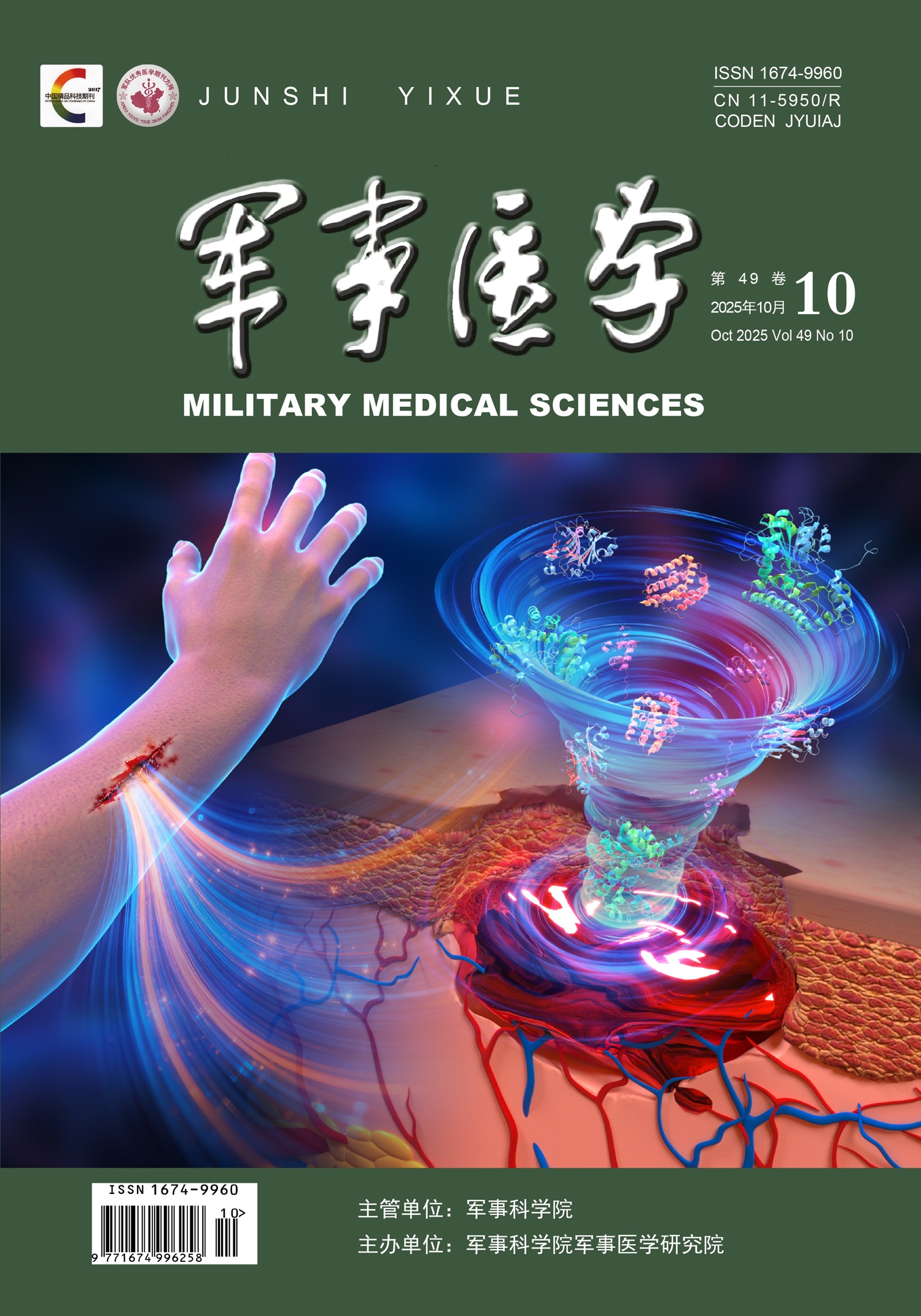Orginal articles
WANG Jun, LIU Yujie, YANG Xuefeng, LI Keqin, LIU Ying, YANG Zhe, YE Yumeng, LIU Zehang, ZUO Hongyan, HAO Yanhui, LI Yang
Objective To investigate the functional changes of oligodendrocytes in a mouse model of cognitive impairment induced by microwave radiation and the mechanism. Methods C57BL/6N male mice were exposed to S-band microwave at 2.856 GHz and 8 mW/cm2 for 15 min. The rectal temperature of mice was monitored by an optical fiber thermometer during microwave radiation. The changes of autonomous exploration behavior and learning and memory ability of mice on the 1st and 7th days after microwave radiation were detected via the open field test and novel object recognition test. Immunofluorescence was used to detect the expression and distribution of neuroglia-2 proteoglycan (NG2) and myelin basic protein (MBP) in the hippocampus of mice on the 1st and 7th days after radiation. Clemastine fumarate,a drug that promoted the maturation of oligodendrocyte precursor cells was administered by gavage,and the expression levels of brain-derived neurotrophic factor (BDNF) and fibroblast growth factor 2 (FGF2) in hippocampal tissues were detected by radioimmunoassay at 1 and 7 days after radiation. The changes of myelin sheath structure an 1 and 7 days after radiation were observed by transmission electron microscopy. The effects of clemastine fumarate on learning and memory impairment induced by microwave exposure in mice were assessed via open field and new object recognition experiments. Results Under the experimental conditions,the rectal temperature in mice caused by microwave radiation increased by less than 1 ℃,which was within the thermal safety range of the body. The open field test showed that compared with the control group,the microwave radiation group didn′t change significant in terms of movement speedon the 1st and 7th days,but the time spent exploring in the central area was significantly reducedon the 1st day after radiation (P< 0.05). In the novel object recognition test,the indexes of the mice on the 1st day were significantly reduced (P< 0.05),indicating that the anxiety like behavior and cognitive function of the mice were impaired after microwave radiation. Compared with the control group,the proportion of NG2+ area in the hippocampus was significantly decreased (P< 0.05) in the microwave radiation group,while that of MBP+ area hardly changed on the 1st day after microwave radiation (P>; 0.05). The expression level of oligodendrocyte related BDNF in the hippocampus was significantly decreased (P< 0.05). The myelin of the corpus callosum was broken,and the myelin g ratio was significantly increased (P< 0.05),suggesting that microwave radiation could reduce the number of oligodendrocyte precursors and damage the secretion and myelin function of oligodendrocyte. Compared with the radiation group,the expression levels of BNDF and FGF2 in the radiation combined with clemastine fumarate group were up-regulated,the myelin g ratio was significantly decreased on the 1st day after radiation(P< 0.05),and the novel object recognition index was significantly increased (P< 0.05). Conclusion Pulsed microwave radiation below the body's fever threshold can cause cognitive dysfunction and other brain damage in mice. The impaired secretion and myelin function of oligodendrocytes and the decreased self-repair ability are the important mechanisms of cognitive dysfunction induced by microwave radiation.
